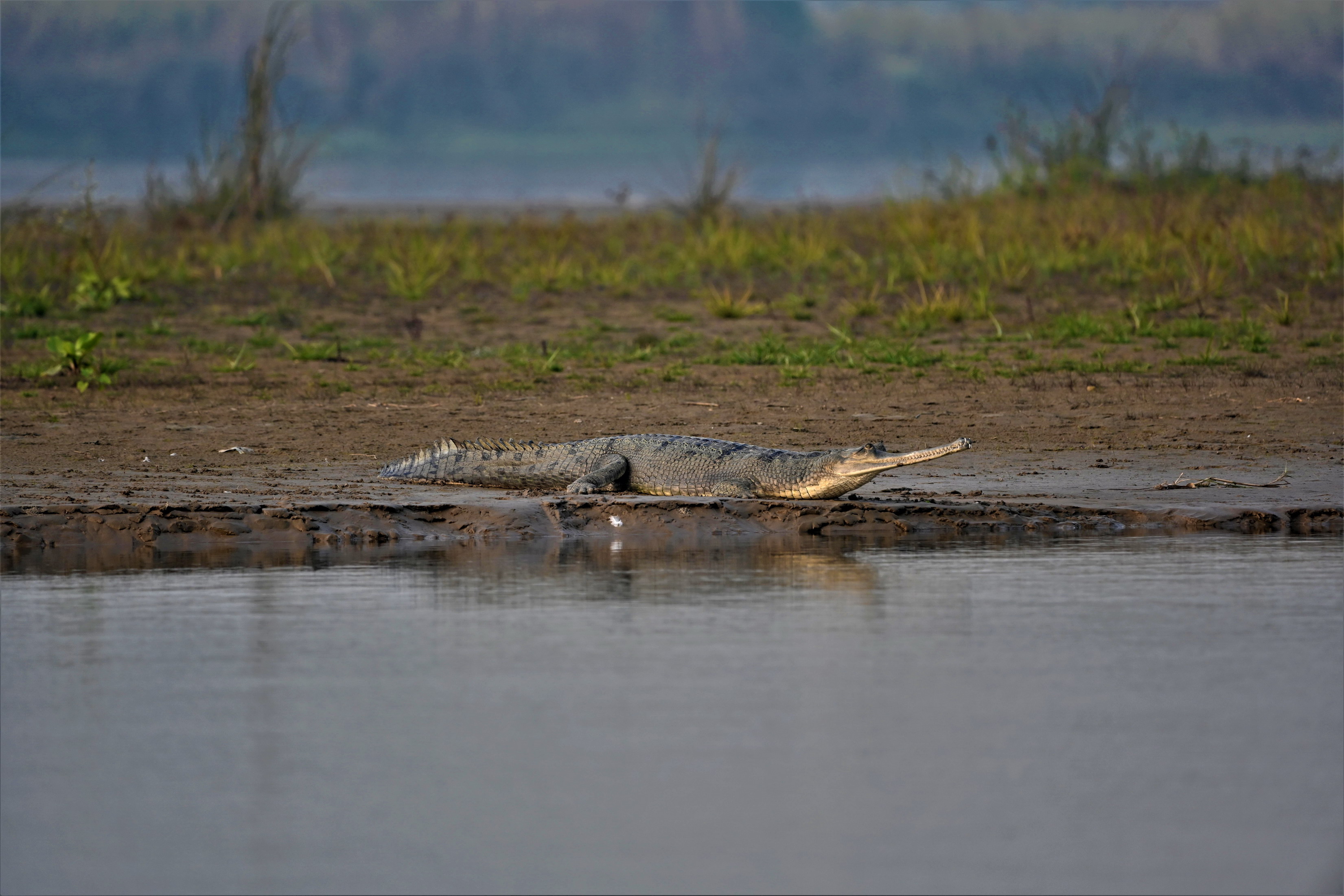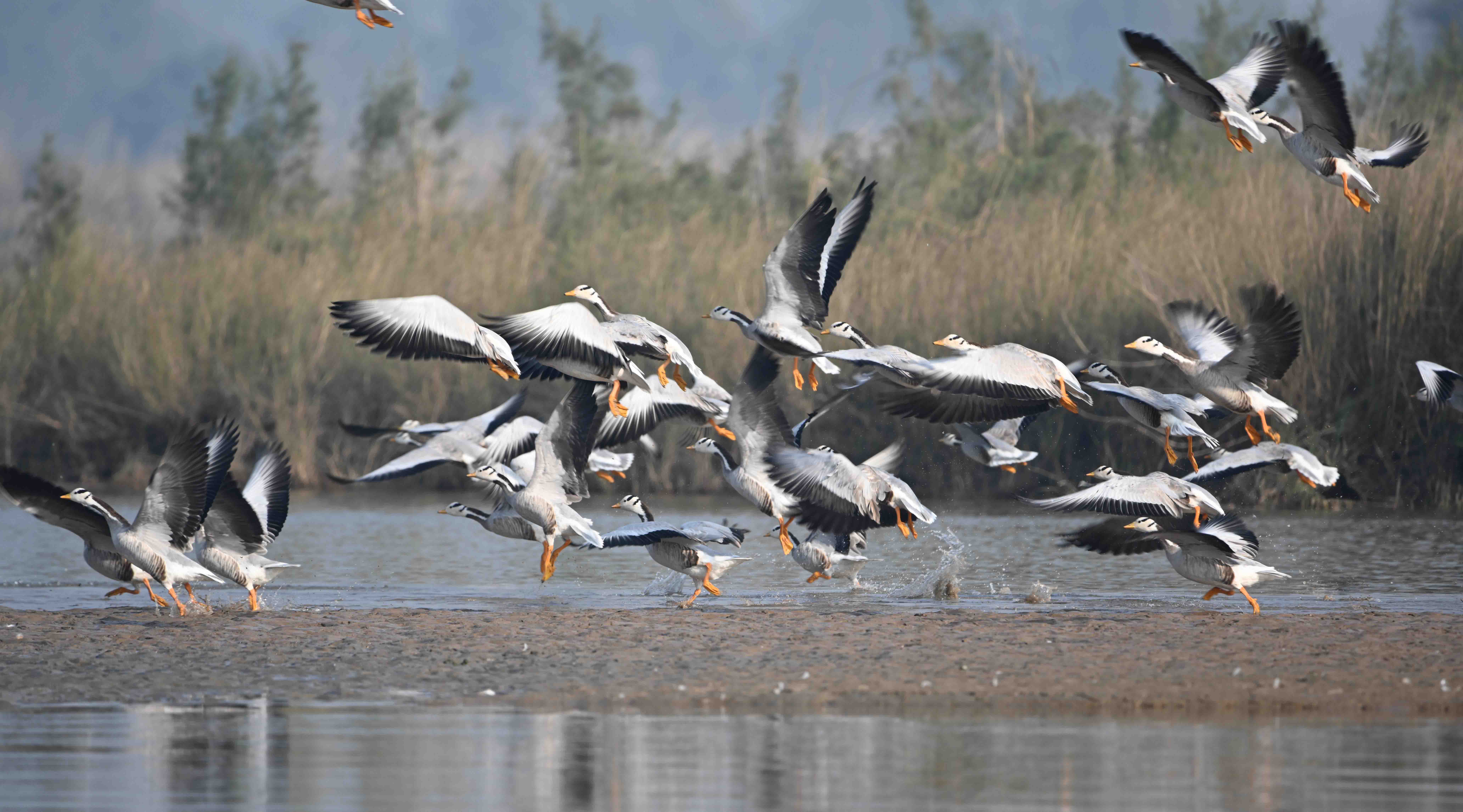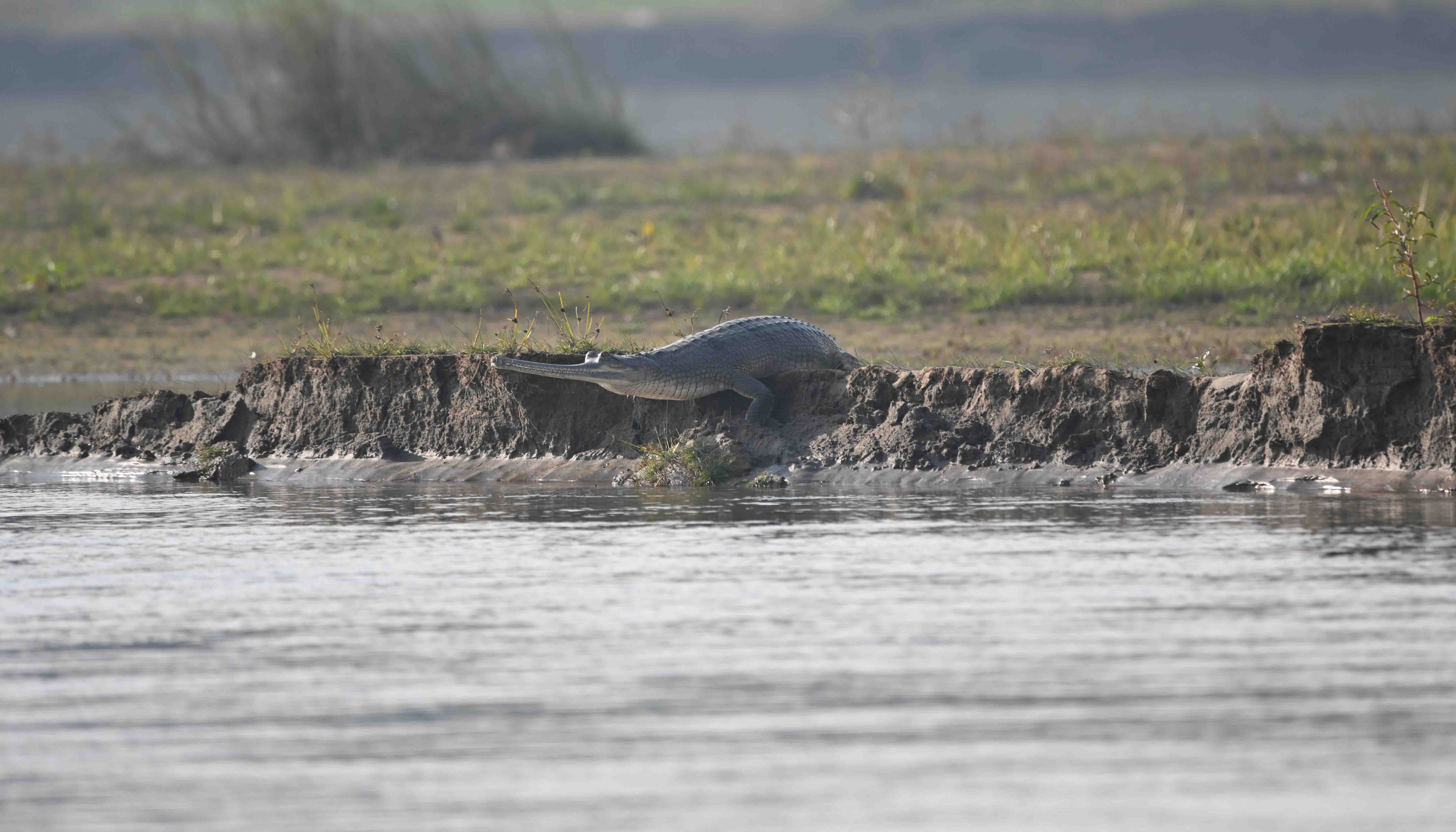
Beas River Wetland
Introduction
A 185 km stretch of the River Beas starting from 52 Headworks, Talwara to Harike Headworks was declared as the Beas Conservation Reserve under the Wildlife Protection Act, 1972 on 29 August 2017. The main channel of the river is broad, dotted with islands, sand bars, braids and wide pools. The average depth of the river varies from about 1.5 m during the dry season to about 4.5 m during the rainy season. Through its course, a strip of shallow alluvial soil fringes the riverbanks, which is inundated during the rainy season. The Beas Conservation Reserve hosts the only population of Indus river dolphins (Platanista gangetica minor) in India. Gharial (Gavialis gangeticus) re-introduction programme project was initiated in 2017 in Beas Conservation Reserve to repopulate the river with gharial more than thirty years after their disappearance. Ninety Four gharial have been reintroduced near village Gagdewal. The smooth-coated otter (Lutrogale perspicillata) is another rare and important species, which is found in waters of River Beas. The terrestrial fauna of the Beas includes hog deer (Axis porcinus), blue bull (Bosela phustragocamelus) and wild pig (Sus scrofa). The River Beas provides vital habitats for more than 500 species of birds and is a particularly important staging area for both summer and winter migratory waterbirds. The river supports species of freshwater turtles like Indian softshell turtle, Indian flapshell turtle, narrow-headed softshell turtle, spotted pond turtle, crowned river turtle and brown roofed turtle. Harike and Beas conservation reserve together support more than 90 fish species.
Location
: 52 Head Talwara to Harike Barrage
Access
: 52 Head Talwara to Harike Barrage
Latitude
: 32.03240
Longitude
: 75.55585
Altitude
: 210 metre
Notification Detail
Flora
: Fishes of Beas Conservation Reserve: Indus River Dolphin (Platanista gangetica minor), Indian river shad (Gudusia chapra), dwarf barb (Puntius phutunio), Indian rohu (Labeo rohita), freshwater garfish (Xenentodon cancila), rayfinned fish (Osteobrama cotio), reba carp (Cirrhinus reba), singhara (Sperata seenghala), sole (Channa marulius), grass carp (Ctenopharyngodon idella), silver carp (Hypophthalmichthys molitrix), common carp (Cyprinus carpio), katla (Catla catla), mali (Wallago attu), mrigal (Cirrhinus mrigala), white carp, salmo (Salmo facia), olive barb (Puntius sarana), large razerbelly minnow (Salmophasia bacaila), dwarf river monster (Bagarius bagarius), chitala (Chitala chitala), bagrid catfish (Rita rita) and Gharial
Fauna
: Submerged plants such as Hydrilla verticillata, Potamogeton crispus, Vallisneria sp., Ceratophyllum demersum and Chara sp are commonly found, while the semi-woody Ipomoea fistulosa is observed growing on the islands in the lake. Amongst the tall grasses Saccharum spontaneum and S. benghalensis are the most common along the higher ground in the wetland area and on the slopes and margins of surrounding bunds and dykes. Tamarix diocia is the sole woody plant truly adapted to an aquatic habitat found in wetland areas. The rest of the trees are upland species which include Acacia arabica, Dalbergia sissoo, Prosopis juliflora and are usually found growing on elevated or occasionally flooded parts of the landscape.
Reach Us
Images
.jpg)


×
Historical Importance
--
--








